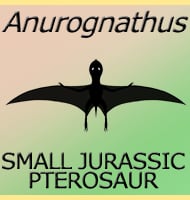Nesodactylus
In Depth Nesodactylus was actually collected way back in 1918 by Barnum Brown, but it was not until the limestone blocks that the remains were in cased were dissolved in acid in 1966 that the remains became known. Not much can be said about the diet and lifestyle of Nesodactylus except that it was a … Read more
